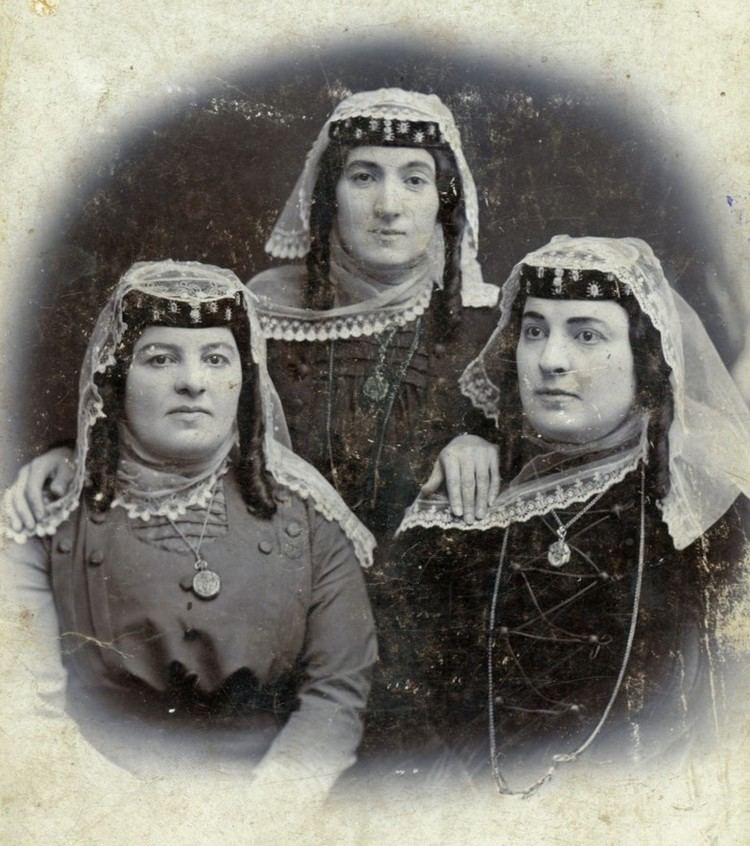 | ||
The Dvals (Georgian: დვალები, Dvalebi; Ossetian: Туалтæ, Twaltæ) were an old people in the Caucasus, their lands lying on both sides of the central Greater Caucasus mountains, somewhere between the Darial and Mamison gorges. This historic territory mostly covers today’s South Ossetia, a breakaway region of Georgia and part of North Ossetia–Alania, Russian Federation, as well as some neighboring lands in Georgia’s historic regions of Racha and Khevi.
Contents
Etymology
The name of the Dvals (Georgian: დვალნი, Dvalni) comes from the old Georgian annals, their land called Dvaleti (დვალეთი. Dvalet`i) after them.
The ethnonym survived to modern times as "Tual" and "Urs-Tual" (Ossetian: Урстуалтæ meaning "white Tuals"), Georgian surname Dvali (დვალი), Dvalishvili (დვალიშვილი) and Ossetian Tuallagov/Twallægtæ come from the name of Dvals.
The Dvals are sometimes tentatively linked to the "Talae" of Pliny the Elder and Ptolemy.
History
When the Mongols destroyed, in the 13th–14th centuries, the Alanian kingdom in the Northern Caucasus, the Ossetes migrated towards and over the Caucasus mountains, forming in part of Dvaletia their community called Tualläg. The Dvals were pushed southward and, as a result, the process of their assimilation into the Georgians and Ossetes accelerated and was completed by the early 18th century. The term Dvaleti, retaining only a geographic meaning, then narrowed to refer solely to the area around the Kudaro valley in the west (modern-day Java district in South Ossetia/Shida Kartli).
Language and origin
Dvals was Kartvelian tribe. Their name means "eye" in Georgian language.
Nakh version
According to a number of historians and linguists, the Dvals probably spoke a Nakh language Gamrekeli (a Georgian historian) provides the typical version of the Nakh theory, stating that the Dvals had a language clearly distinct from that of the Ossetes (who eventually migrated onto their land) and akin (but not equivalent to) to the Vainakh languages.
Backing the theory that the Dvals were Nakh includes numerous sources.
Ossetian version
Another theory is that the Dvals were Ossetian speaking people. According to this, they were among first Ossetes to settle to southern Caucasus. Evidence for the Ossetian theory also draws from various elements:
Georgian version
Throughout the entire history of the Georgian statehood, even after its inclusion into the Russian Empire, (up to 1858), Dvaleti had always been considered integral part of Georgia. From the 15th century settlement of Ossetians starts in Dvaleti province, located in the Northern part of the main Caucasus Range.
The mentioned process continued throughout the 16th century, while in the 17th century, assimilation of the local Georgian ethnic group of Dvalians draws to its end. It should be mentioned that before the settlement of Ossetians in Dvaleti, a major part of Dvalians had migrated to different parts of Georgia (Shida Kartli, Kvemo Kartli, Imereti, Racha). similarly to Pshavi, Khevsureti, and Tusheti was ruled by the King’s officials – Mouravis (Giorgi Saakadze was a Dvalian Mouravi). Russia annexed Georgia in 1801 along with Dvaleti. In 1858, the metropolis detached Dvaleti from Georgia in an administrative way (from Tbilisi Province), and attached it to Tersky district of Russia. Several observations have been made by scientists regarding the ethnic origin of Dvalians, but before acquainting you with these observations, we would like to refer to the well familiar assertion by Vakhushti Bagrationi, pointing out that – “the language they speak is old, Dvalian, but presently they use Ossetian as if it were their native tongue”. V. Gamrrekeli regarded Dvalians Vainakhs, Kartvelian Vainakhs to be more exact. V. Gamrekeli believed that Kartization of Dvalians had to have occurred in the 7th century, when Kartlian population, fatigued by the Arab rule had migrated to different direction. The author later, changed his views, and in the article published in Georgian Soviet Encyclopedia, recognized Dvalians as Kartvelian tribes, namely Zans. Some scholars point that they were not exactly Zan but represented one the Kartvelian languages. From Georgian authors, the last to address the issue of Dvalian origin was B. Gamkrelidze, who arrived at the conclusion that “Dvaleti, from the ancient times,culturally, and administratively had always been an integral part of the Georgian world. In favour of the Dvals Georgian (Kartvelian) origin it's important to mention the written messages on the Gospel of 14th–15th century, made in Nuskha – Khucur (Ecclesiastical scypt, meant for use by priests), kept in 1920s in the Saint George Church, Sojanis Kari in Oni. The written notes belong to the same late period.There is an inscription, made in red ink in one of the places of the context list, which reads: “Have a mercy upon the humble Giorgi, interpreter of the Gospel”. Thus the Gospel is edited by Giorgi Mtatsmindeli” There are several inscriptions on the Gospel: “May the God bestow all the heavenly mercy upon Nikoloz, scribe of the book"
Another important detail to prove their Kartvelian origin is the absence of crypts in Dvaleti Crypts were encountered only in Chechnya and Ingushetia, while Chechens and the Ingush were recognized as skillful builders and used to build the crypts not only in their native lands but in neighbouring Ossetia as well. There is no doubt that if Dvalians had been related to Vainakhs, the culture of crypt building would have existed among them as well.
Accomplishments
The most prominent Dvals were, perhaps, the 11th–13th calligraphers – John, Michael, Stephen, and George – who worked at various Georgian Orthodox monasteries abroad, chiefly in Jerusalem and at the Mount Athos, and created several fine examples of old Georgian manuscripts, e.g. The Months and The Vitae of St Basil (John the Dval, circa 1055), and the so-called Labechini Gospels (George the Dval, 13th century). Another famous Dval calligrapher was Vola Tliag (Ossetian: Vola Tliag meaning "Vola from Tli") who worked over Kapelle of Nuzal.
The Orthodox church venerates also the memory of St Nicholas of Dvaletia, a Dval monk from the Georgian monastery at Jerusalem, who was martyred, on October 19, 1314, at the order of Amir Denghiz for having preached Christianity. He was canonized by both Alanian and Georgian churches.
